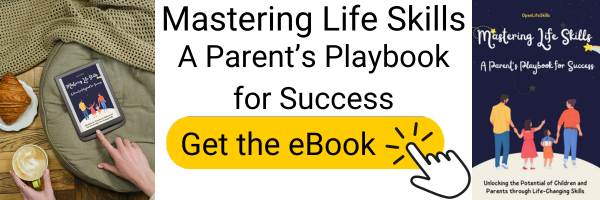In this article:
Introduction
As parents, one of our most important roles is to guide our children in developing essential life skills, including how to handle conflicts and frustrations without resorting to physical aggression. Teaching your child not to hit is a crucial aspect of their social and emotional development. In this article, we will explore the art of teaching your child non-violent conflict resolution skills in a friendly yet authoritative manner. Our target audience is parents who aim to raise empathetic, emotionally intelligent, and peaceful children.
Understanding the Importance of Non-Violence
Before we dive into how to teach your child not to hit, it’s vital to understand why non-violence is essential for their development.
- Conflict Resolution Skills: Non-violence teaches children effective ways to resolve conflicts, communicate their needs, and collaborate with others.
- Empathy: Teaching non-violence cultivates empathy, helping children understand and respect the feelings and boundaries of others.
- Healthy Relationships: Non-violent communication is a cornerstone of healthy relationships. It promotes trust, mutual respect, and open dialogue.
- Emotional Regulation: Non-violent conflict resolution requires emotional regulation. Children learn to manage anger and frustration constructively.
- Modeling Behavior: Teaching non-violence models peaceful behavior for children, reinforcing the idea that violence is not an acceptable solution to problems.
With these benefits in mind, let’s explore strategies for teaching your child not to hit effectively.
- Model Non-Violent Behavior: Children often emulate their parents’ actions. Demonstrate non-violent conflict resolution by addressing conflicts calmly and without aggression.
- Teach Emotions: Help your child identify and express their emotions. Use age-appropriate language to discuss feelings like anger, frustration, and sadness.
- Positive Communication: Encourage open and honest communication with your child. Create an environment where they feel safe discussing their thoughts and emotions.
- Use “I” Statements: Teach your child to use “I” statements when expressing their feelings. For example, “I feel upset when…” instead of “You make me angry when…”
- Problem-Solving Skills: Teach your child how to solve problems constructively. Encourage them to brainstorm solutions and consider the consequences of their actions.
- Empathy Building: Cultivate empathy by discussing how their actions might make others feel. Encourage them to put themselves in the other person’s shoes.
- Conflict Resolution Games: Engage in conflict resolution games or role-playing scenarios where your child can practice non-violent responses to conflicts.
- Consistent Consequences: Establish clear consequences for hitting or using violence. Make sure the consequences are consistent and age-appropriate.
- Teach Alternative Actions: Encourage your child to use alternative actions when they feel angry or frustrated, such as taking deep breaths, counting to ten, or walking away from the situation temporarily.
- Conflict as a Learning Opportunity: Teach your child that conflicts are opportunities for growth and understanding. Encourage them to reflect on what they can learn from each conflict.
References to Authorities
To provide authoritative guidance on teaching non-violence and conflict resolution to children, consider referencing the following sources:
- American Academy of Pediatrics (AAP): The AAP offers resources and articles on parenting and child development, including guidance on teaching non-violent conflict resolution skills.
- Center for Nonviolent Communication (CNVC): CNVC provides resources and training on non-violent communication, a valuable framework for teaching peaceful conflict resolution.
- Books on Child Development: Books like “Peaceful Parent, Happy Kids” by Laura Markham and “The Whole-Brain Child” by Daniel J. Siegel and Tina Payne Bryson offer insights into raising emotionally intelligent children.
Real-Life Scenarios and Practical Applications
Let’s explore some real-life scenarios where teaching your child not to hit is essential:
- Sibling Conflicts: Sibling relationships often involve disagreements and conflicts. Teach your child to use non-violent communication and problem-solving skills to resolve disputes.
- Playdates and Peer Conflicts: When conflicts arise during playdates or interactions with peers, encourage your child to express their feelings and find peaceful solutions.
- School-Related Conflicts: Discuss ways to handle conflicts with classmates or teachers without resorting to violence. Encourage your child to seek adult help when needed.
- Handling Frustration: Teach your child alternative ways to handle frustration, such as taking a break, talking to someone they trust, or engaging in a calming activity.
- Dealing with Bullying: Instruct your child on how to assert themselves and seek help from trusted adults if they experience bullying. Violence is not an effective solution.
Conclusion
Teaching your child not to hit is a fundamental step in nurturing their social and emotional development. By imparting non-violent conflict resolution skills, you equip your child with the tools to communicate effectively, empathize with others, and build healthy relationships. Remember that this skill is best learned through consistent modeling, open communication, and practice. By fostering an environment that values non-violence and peaceful problem-solving, you empower your child to become an empathetic, emotionally intelligent, and peaceful individual who can navigate conflicts and challenges with grace and respect for others.




